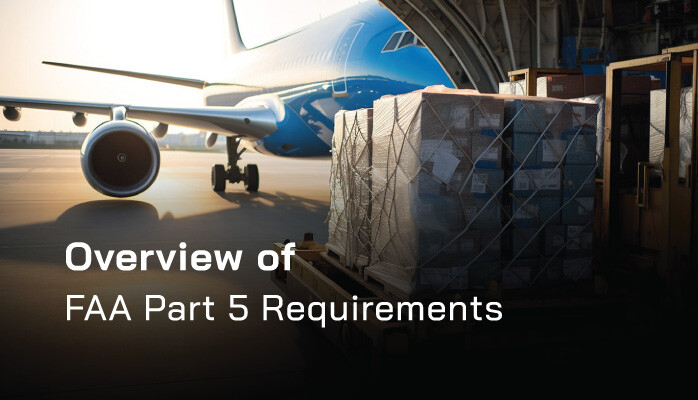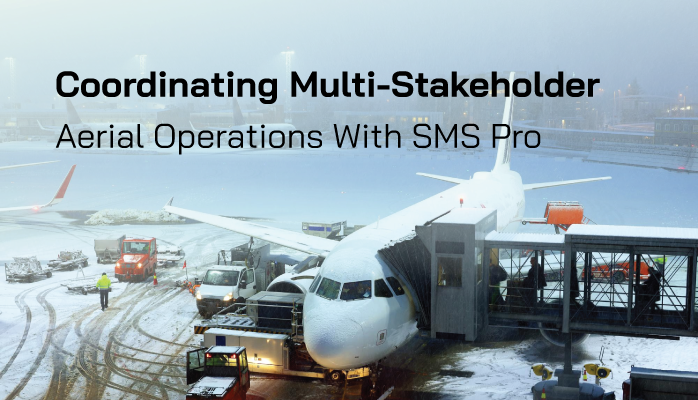A robust Safety Management System (SMS) is critical for managing risks and ensuring compliance with global and national regulations. For aviation safety managers and accountable executives—senior leaders responsible for SMS oversight—the Hazard Register is a cornerstone tool for systematically tracking and mitigating hazards.
Establishing a regulatory compliant framework for the Hazard Register is essential to meet standards set by the International Civil Aviation Organization (ICAO) Annex 19 and national civil aviation authorities like the FAA (Part 5) or EASA, while fostering a proactive safety culture.
Read More
Topics:
Aviation SMS Database,
4-Safety Promotion,
Risk Management Software,
2-Safety Risk Management
Setting Aviation Safety Goals for Compliance
Setting safety goals and objectives in an aviation Safety Management System (SMS) manual, as outlined in TOC 1.6, is essential for driving continuous improvement and ensuring compliance with International Civil Aviation Organization (ICAO), Federal Aviation Administration (FAA), and European Union Aviation Safety Agency (EASA) standards.
These goals guide organizations in measuring safety performance, reducing risks, and fostering a proactive safety culture.
Read More
Topics:
Aviation SMS Implementation,
4-Safety Promotion,
1-Safety Policy,
Risk Management Training
Aviation safety hinges on proactive risk management, and Safety Management Systems (SMS) provide the framework to achieve this. Within the aviation SMS ecosystem, two voluntary programs—Flight Operational Quality Assurance (FOQA) and Aviation Safety Action Program (ASAP)—play pivotal roles in enhancing safety.
These programs, widely adopted in the U.S. under the Federal Aviation Administration (FAA) and aligned with global standards like those of the International Civil Aviation Organization (ICAO), offer unique approaches to hazard identification and risk mitigation.
Read More
Topics:
4-Safety Promotion,
3-Safety Assurance,
2-Safety Risk Management,
Risk Management Training,
FAA Compliance
In the fast-paced world of aviation, ensuring safety is paramount. The aviation Safety Management System (SMS) has emerged as a critical tool for managing safety risks systematically, helping organizations proactively identify hazards and mitigate risks.
Three key regulatory bodies—the International Civil Aviation Organization (ICAO), the Federal Aviation Administration (FAA), and the European Union Aviation Safety Agency (EASA)—each provide SMS standards that guide aviation safety practices. While these standards share a common goal of enhancing safety, they differ in their approach, applicability, and specific requirements.
Read More
Topics:
4-Safety Promotion,
3-Safety Assurance,
1-Safety Policy,
2-Safety Risk Management,
FAA Compliance
Creating Aviation SMS Communication Plans
An effective communication plan is a vital component of an aviation Safety Management System (SMS) manual, as outlined in TOC 1.5. It ensures that safety information, including hazard reports and safety policies,
Read More
Topics:
Aviation SMS Implementation,
4-Safety Promotion,
1-Safety Policy
The Need for a Proactive Safety Culture
Utility aviation, including power line inspections, wildfire monitoring, and infrastructure surveys, operates in high-risk environments where safety is paramount. The Federal Aviation Administration reports that 70% of utility aviation incidents stem from human factors, costing millions annually, according to the International Air Transport Association.
A proactive safety culture, where employees anticipate and address risks, is critical to prevent incidents and ensure compliance with ICAO Annex 19, FAA Part 5, Part 91, and Part 135. SMS Pro’s aviation SMS software, with its Part 5 Fulfillment modules, fosters this culture through anonymous reporting, comprehensive training, and real-time analytics, improving safety reporting by 40% in utility operations.
Read More
Topics:
4-Safety Promotion,
FAA Compliance
In the fast-paced, ever-changing world of aviation, a robust safety culture is the backbone of operational excellence. For new safety managers tasked with preparing for Safety Management System (SMS) audits, one of the most daunting challenges is training accountable executives to champion safety culture.
These leaders, often focused on operational and financial priorities, may not immediately grasp the nuances of SMS or their role in fostering a proactive safety mindset. Yet, their buy-in is critical to embedding safety as a core organizational value.
Read More
Topics:
4-Safety Promotion,
3-Safety Assurance,
1-Safety Policy,
FAA Compliance,
Safety Culture
For new aviation safety managers, preparing for Safety Management System (SMS) audits is a daunting task, particularly when it involves coaching accountable executives.
These senior leaders, often preoccupied with operational and financial priorities, may struggle to grasp the specifics of 14 CFR Part 5, the Federal Aviation Administration’s (FAA) regulation governing SMS for many aviation operators. Yet, their clear understanding of Part 5 requirements is critical for ensuring compliance, fostering a robust safety culture, and passing audits.
Read More
Topics:
4-Safety Promotion,
3-Safety Assurance,
1-Safety Policy,
Risk Management Training,
FAA Compliance,
Safety Culture
Safety Survey Benefits Run Deep
Surveys seem a bit old-fashioned. That’s probably because they are.
Surveys have been around and popular for years. Safety surveys have many uses besides getting the opinions of the workforce. Surveys are also useful for
- Promoting the aviation safety management system (SMS);
- Teaching employees about processes or procedures;
- Confirming management's suspicions about employee behaviors.
Read More
Topics:
4-Safety Promotion
Introduction: The Complexity of Multi-Stakeholder Aerial Operations
Aerial operations for utility tasks, such as power line inspections and wildfire patrols, involve multiple stakeholders—pilots, ground crews, maintenance teams, vendors and wildfire response units—working in high-risk, dynamic environments.
Read More
Topics:
Aviation SMS Database,
4-Safety Promotion,
Risk Management Software,
1-Safety Policy













